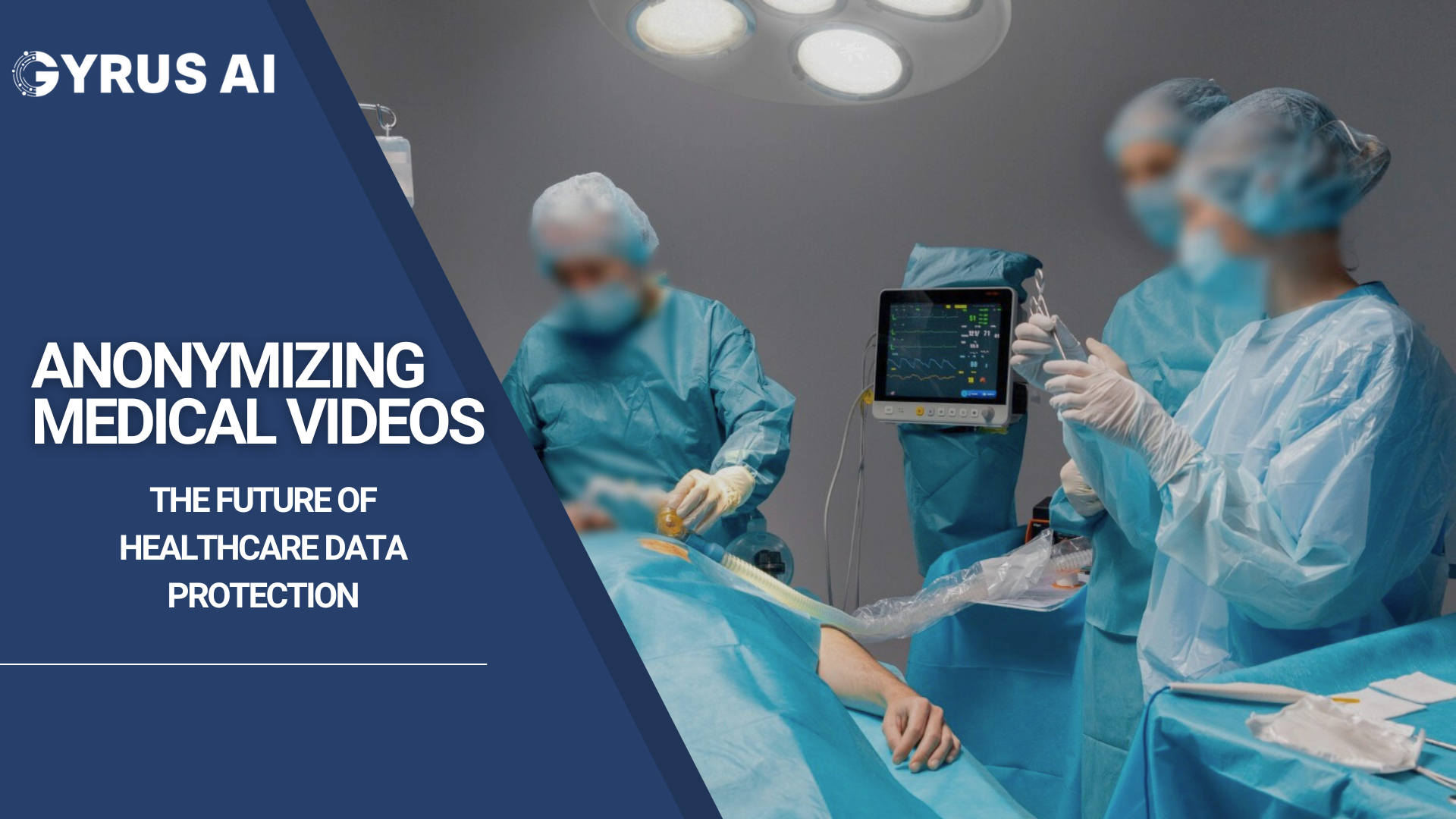
Anonymizing Medical Videos: The Future of Healthcare Data Protection
INTRODUCTION
Medical data is invaluable to saving lives, training health care personnel, and developing new therapies. Advanced technology has led to the increase in electronic retention of healthcare information that may carry sensitive personal data. These have seen improvements in medical care but also heightened concerns on confidentiality.Additionally, more information is being generated through the use of novel technologies in healthcare and new types of data such as 3D camera recordings of patient monitoring. For protecting private individual’s health details, strict regulations are put in place by HIPAA (in US) and GDPR (in EU). Non-observance of these laws attracts heavy penalties.
Hospitals must depersonalize data to prevent regulatory problems by removing Personally Identifiable Information (PII). However, the process of making medical information anonymous is not perfect and faces certain limitations, especially in case of video data and genomic information. This calls for AI models specifically designed for such datasets because types of medical data differ from one another as seen in videos taken during surgical operations that portray inner body parts. The models have to be strong since failing to anonymize even a few frames of a video can breach the confidentiality of patients.
What is Video Anonymization?
Video anonymization is the way of removing or obscuring information which could render people in the videos to be identified. This information may include someone’s visage, voice or other personal details that might serve as an identifier. However, video anonymization is about safeguarding patient’s privacy when medical practitioners are allowed to utilize analysis and diagnosis data on videotapes.
Healthcare professionals can use this technique to keep patients’ private lives confidential while still using any necessary information they need. Video anonymization is a useful method for protecting patient privacy across various applications in healthcare.
How it works for Medical Videos?
The Facial Replacement Template is a state-of-the-art technology for video anonymization that replaces faces or specific numerical patterns with artificial characters or 3D models. In this regard, the model uses different demographic factors like age, sex, race, height, weight and face shape to choose a synthetic character or an AI-generated photo-realistic face from among those that never existed. While preserving demographics, facial expressions, critical attributes and expression deformations are modified by the algorithm in order to keep up with it all; these anonymous faces maintain their natural appearances thereby conserving some non-identifying features such as age group, gender identity, facial expression and direction of eye gaze which makes analysis feasible without breaching privacy laws. This ground breaking technique is more effective than traditional solutions that defocus or pixelate images.
Benefits of Video Anonymization in Healthcare:
Here are some of the key uses of video anonymization in healthcare:
1. To protect privacy for patients on medical images: Medical imaging is an important instrument in diagnosing and treating various conditions. However, many medical images have identifiers such as patient’s faces which may undermine privacy. By removing this information from the imaging, video anonymization can be used to enable medics use them without endangering the privacy of the patients.
2. Corporate compliance: In aiding health care institutions to comply with data protection laws such as GDPR(General Data Protection Regulation that call for personal data to be processed securely and lawfully, video anonymization plays a major role.
3. Privacy on telemedicine: Privacy of a patient is under threat when it comes to using video conferencing or other means of communication tools. Video anonymization may help keep the privacy intact during telemedicine consultations thereby allowing patients to seek medication while preserving their privacy.
It can also reduce potential bias and discrimination during assessment process leading into an inclusive and fairer process for candidates
4. Enhances data security: The storage and sharing of sensitive information electronically may expose it to the risk of being compromised. By removing personal information from the video, video anonymization helps to reduce this risk thus making it uninteresting for possible data thieves.
5. Enables training, research and analysis: Medical training and research sometimes involve the use of videos that can contain private patient’s information. Even though anonymized videos are still applicable in medical professionals for the purpose of doing research as well as analysis. It allows for better understanding of diseases and their treatments that ultimately result in improved patient outcomes.
CONCLUSION
To sum up, video anonymization is a vital tool for safeguarding the privacy of patients in the healthcare sector. It has several uses ranging from securing medical imaging and telemedicine to making patients comfortable during medical procedures.
At Gyrus, we have an advanced video anonymization model (API/on-premise) that can automatically mask, blur or replace faces (or a specific type of Numbers) with synthetic characters in the video. The model we use is based on state-of-the-art artificial intelligence and computer vision developments that are able to eliminate Personal Identifiable Information (PII) while retaining details necessary for diagnosis and treatment by medics. Anonymized videos can be used in storage, training, inference and sharing as per privacy regulations such as GDPR, CCPA among others. Video Anonymization models combined with other Gyrus AI models for video processing provide advanced visual intelligence and analytics which offer insights into human behaviors and actions without compromising privacy.